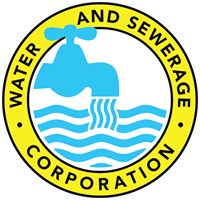Water Conservation – Helpful Tips
- Inspect all pipes and faucets for leaks, as gallons of water could be dripping away.
- Check toilets for hidden leaks. Tank-to-bowl leaks can waste about a quart of water with each flush. Place a few drops of food coloring in the tank.
- Wait 15 minutes and see if the color appears in the bowl…if so, you have a leak.
- Install ultra-low-volume toilets and low –flow shower heads, or fill a plastic quarter or liter bottle with water and put it in the toilet tank to reduce the amount of water used with each flush. To anchor the bottle, partially fill it with sand or small stones.
- Turn off the tap while you shave or brush your teeth and take shorter showers.
- Load the automatic dishwater to capacity before running it.
- Use sinks when washing dishes by hand…one for washing and one for rinsing (rather than running the faucet).
- Clean vegetables using water in a pan and a vegetable brush rather than letting the tap run needlessly.
- Put a pitcher of drinking water in the refrigerator so the whole family can enjoy nature’s best thirst quencher without having to run the tap.
- Insulate your hot water pipes. Less water will be wasted before hot water flows.
- Match the load setting on the washing machine with the amount of laundry to be washed. If your machine has no load selector, wash full loads only.
- Better yet, find out if you’re nearby car wash recycles its water… then treat yourself to car wash and actually save water.
- Use a broom to clean sidewalks or your driveway. Washing down these areas with a hose wastes water and may spread contaminants from your drive or lawn.
- Adjust sprinklers so only the lawn is watered and not the house, sidewalk or street.
- Water your lawn in the early morning and never on a windy day, to avoid excess evaporation.
- Place a layer of mulch around trees and plants so more water can be retained.
- Landscape using low-water plants and rock gardens to reduce the amount of lawn and garden that needs watering.
- Know how to turn off an automatic sprinkler system in case of rain.
- Install trickle-drip irrigation systems close to the roots of your plants.
- Use a soil moisture indicator to tell when your lawn needs watering.
- Clean greasy hands with a waterless hand cleaner that can be found at most hardware and discount stores.
- Cover pools and spas to cut down on evaporation.
- Recycle water from fish tanks by using it to water plants. Fish emulsion is a good and inexpensive fertilizer that is high in nitrogen and phosphorous.
- Use cold water, heated on a stovetop or in the microwave, instead of hot water from the tap to prepare baby formula and convenience foods that call for hot water. Hot tap water can pick up metals from plumbing pipes or solder much easier than cold water.
- Don’t drink water directly from wells, lake, pond, or creek without bringing it to a rolling boil for at least a minute. Let the water cool before drinking it.
- Know the facts about home water treatment devices. There is no single cure-all filtration system or technique. Difference water filters remove different substances from the water. Some people use home water filters to improve the taste, smell and/or appearance of their tap water, but it may not make the water treatment devices require regular maintenance, which if not done properly, can result in water quality problems.
- Take used motor oil and other automobile fluids to BEC; a services station that advertises collection for reprocessing, or a recycling center. A single U.S. quart of motor oil can pollute up to 250,000 gallons of water.
Information
Staff connect
Public Connect
-
All users of this website agree to be bound by the Terms of Use Policy © 2025 Water and Sewerage Corporation.
38 University Drive E. George Moss Bldg., Box N-3905 Nassau, Bahamas

